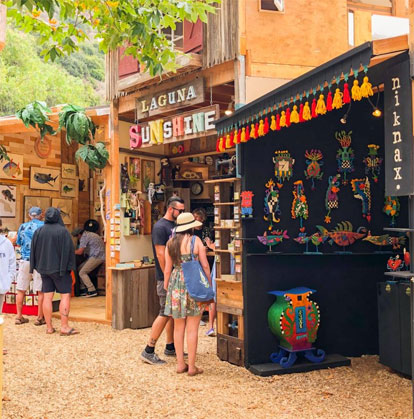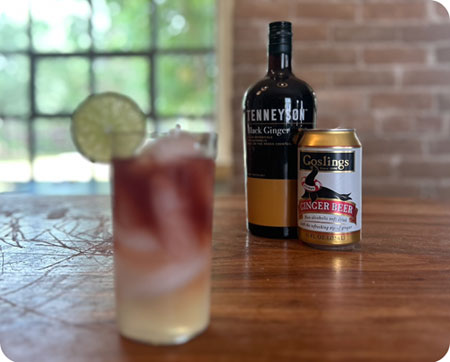INTERVIEW WITH BARBARA MARTINEZ:
Singer Barbara Martinez Discusses How She Carries on Her Family’s Musical Gifts!

of Latin America and has put together a collection of singers and musicians to keep the music alive!
to be a singer?
who lived and worked in the 40s and 50s and traveled a ton. I spent many, many, many hours and years listening to their
songs, not only getting a sense of the music and their voices; but analyzing the way that they expressed themselves and
were not afraid to show their feelings. There must be a variety of motivations that bring singers to become singers, but for
me, the medium to let out your feelings always seemed so powerful.
effect on your choice of singing and your specific presentation?
official was a big deal for me because I guess I was kind of intimidated by the female musicians in my family. “Who are you kidding? You can never live up to the legacies of Morenita Rey and Libertad Lamarque?!” It felt a little more neutral to
choose a genre that wasn’t tango. And yet flamenco is very connected to tango in a way.

of them also have a way of singing that sometimes feels(not sounds, but feels) that they’re talking and not singing. But
I can never really sound “like them,” and I try to just sound like myself.
of some of your family’s favorite songs?
written by Chilean composer Armando Gonzalez Malbrán in 1929. My grandmother Morenita recorded it on one of her
records. I’ve been doing my own thing with it. It might sound more a bit “flamenco” in my phrasing or in my way from
getting from A to B.
Gonzalo Grau, and it includes a Cha Cha I heard in one of my grandmother’s albums.
It’s called “Se Acabó Tu Cuarto De Hora.”
How has your musical upbringing informed or inspired your debut album, DAWN?
learn so much from different singers, –male and female– -even singers who sing in languages I don’t speak. I just appreciate good music from different places and times. But it was not until recently that I have been writing my own music and saying
my own thoughts. Even though I consider myself quite a beginner, there is no denying a very rich relationship to music that started with the women in my family! And my mother gave me all of the opportunities and encouragement to study music growing up. My grandmother died very young. I actually never met her. Raising me with her music was definitely a natural
way that my mother could stay connected to her. The last track on “DAWN” is very much about this family story. It’s called
“Abuela” (Grandmother).
that is just your natural way of songwriting?
sound at all like Albas. When we use “flamenco fusion” to describe our sound, it refers to a 3 main elements:
1) ALBA uses the textures of the flamenco guitar, and a flamenco voice, using the grooves of popular flamenco styles: rumba, tangos flamencos, bulerías, and variants. We definitely fuse those elements with different musical influences, especially
those that we both have found living in New York City for so long.
2) Spoiler: I’m not Spanish. I am Latin American: born in Venezuela, my mother’s side of the family from Argentina, I
spend a whole lot of time in Spain, and I grew up in New York City. Flamenco is one of the languages that I used to speak,
and even when I sing other styles, flamenco shows up!
3) ALBA uses an instrumentation that isn’t typically in traditional flamenco music but which, for decades now, has been included in the fold of what many people would consider “current” or “modern” flamenco. You can’t deny that drums, saxophone, kora, talking drum, and electric bass are sounds that are not usually what you expect to hear when you go to a flamenco concert. Some of our songs also have some English lyrics.

with them?
voice and a guitar. It has been a magical experience composing with him. Bob DiGiacomo, who is the bassist in the group, is also our producer and mixer. He is somebody who doesn’t really come from a flamenco background and
yet has played a lot of flamenco and Latin, and jazz in New York City. We have been super lucky to collaborate with two musicians from Spain who have been a part of musical groups that ALBA looks up to: Ketama, Nina Pastori, Pata Negra, Rosario, Aurora – figures who some people would call flamenco pop, and others might call flamenco fusion or Spanish pop: Joselín Vargas produced “Sin Fronteras” and plays percussion in most of the songs. And Arturo Soriano plays saxophone and flute, and he also made exquisite arrangements for his parts. It was also a huge blessing to have the presence
of Tim Ries, saxophonist of The Rolling Stones. He and I go way back. And he loves flamenco! In reality, everyone involved in the project is of a very impressive caliber when you look at their amazing careers: drummer Engin Gunaydin
of the New York Gypsy AllStars, two-time Grammy nominee pianist Gonzalo Grau of La Clave Secreta, flutist Maria Toro and violinist Ernesto Llorens, exceptional Spanish musicians in their own right who lead their own projects throughout
the world. We also befriended two musicians from Mali, master kora player Yacouba Sissoko and talking drum
player, Baba Moussa. Their participation in this is a testament of the mutual respect that we have for each other’s music
and culture.
We definitely want to travel with this project, and we want to share our new music with the world! We are taking the
first steps toward planning a tour of Spain in the summer of 2024. We are also making stops to all of the cities in the United States that have thriving Flamenco communities. You may be surprised to know that there are many disciples of
flamenco dance, singing, and guitarin many of the major cities in the United States. We also want to reach out to
the Latin American communities because they can appreciate our lyrics, and they often love to dance! We also have our
eye on touring Latin America…
in this interview!
Stevie Wilson
LA-Story.com
If you have a question, you can email me at [email protected]
Disclosure: some of the links on this post might have affiliate links!
It costs you nothing.
Subscribe to RSS headline updates from:
http://feeds.feedburner.com/la-story/Bpyd Powered by FeedBurner.com
Please respect copyright provisions if you feature content from LA-Story.com, including images, podcasts, videos, and the accompanying text.
We require a notation of content origination (meaning credit tag), a link- back to the specific page; and please email the link to
[email protected] before the piece goes live.
LA-Story.com, LA-Story Recessionista, Celebrity Stylescope,
Celebrity Style Slam Trademark 2020-2025
Follow Stevie Wilson and LA-Story on these social media channels:
Facebook: https://www.facebook.com/stevie.wilson
Instagram: https://instagram.com/stevie_wilson
LinkedIn: https://www.linkedin.com/in/steviewilson
Pinterest: https://www.pinterest.com/lastoryblog/
Twitter: https://twitter.com/LAStory.com


